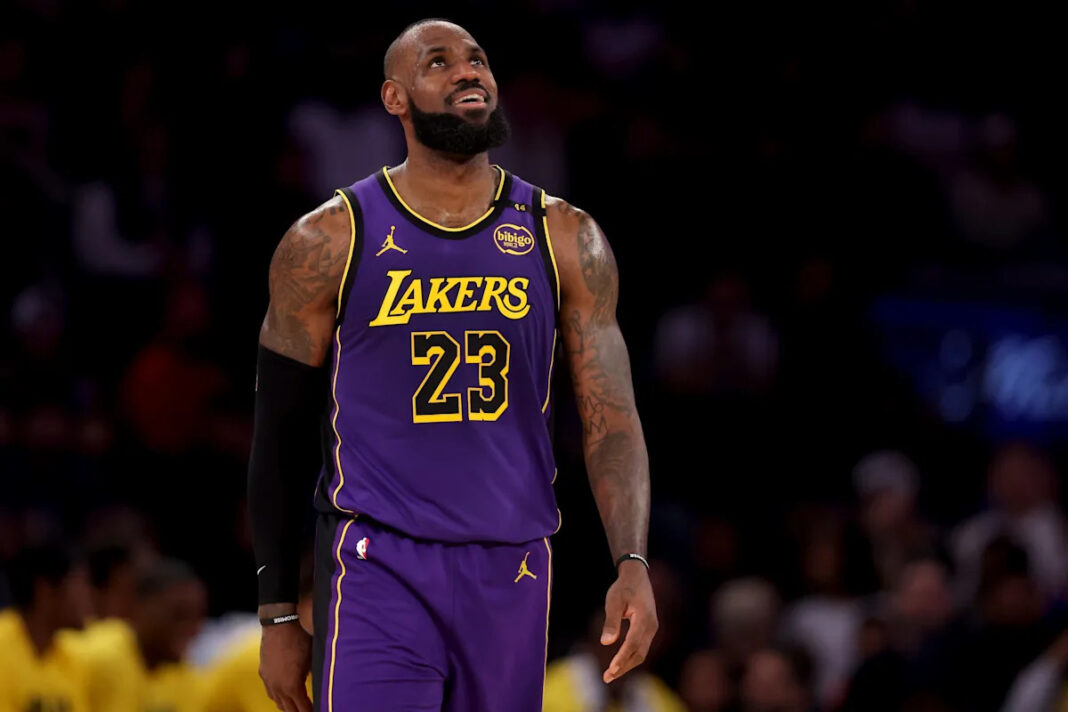LeBron James: The Unyielding Passage of Time and Its Effects
LeBron James, widely regarded as one of the most impactful basketball players in NBA history, is now facing a new adversary: age. While he has managed to defy the odds for much of his career, the inevitable effects of growing older have begun to show, as evidenced by his recent injury struggles.
Acknowledging Injuries: The Current Situation
Recently, the four-time NBA MVP has been ruled out of the Los Angeles Lakers’ season-opening showdown against the Golden State Warriors due to sciatica affecting his right side. This marks a significant moment in James’ career — the first time he will miss a season opener after an illustrious, 22-year journey through the league. Reports indicate that he could be sidelined for 3-4 weeks, prompting concern not only from fans but also from pundits who closely monitor the game’s evolution.
The Historical Context of Longevity
James has remained remarkably durable throughout the majority of his career, shattering notions of how long an athlete can remain at the pinnacle of their sport. For the first 11 years, he rarely missed more than seven games in a season, which is remarkable for any athlete, let alone one participating in a physically demanding sport like basketball. However, the last few seasons have seen a marked change in this trend, with injuries forcing him into luxury suites more frequently than before.
In the 2007-08 season, he missed five games due to a sprained left index finger and faced various minor setbacks for the remainder of his early career. Even during his prime years in Miami (2010-2014), the most impactful injuries were primarily for rest or minor concerns, such as a right hamstring strain that sidelined him for four games in 2012.
Injuries Begin to Accumulate
As James returned to Cleveland in 2014, a slew of injuries started to accumulate. Missing 13 games that season due to lower back issues and knee problems was a harbinger of what would come. Transitioning to the Lakers brought about even bigger challenges. From a strained left groin that kept him out for 27 games in his first season, to a championship-winning season marked by a high ankle sprain the following year, injuries began to interrupt his quest for greatness more frequently.
Season after season, this pattern persisted. An abdominal strain and left knee swelling caused James to miss 26 games in 2021, and the following year, foot injuries sidelined him for 27 games, preventing him from reaching the 60-game mark for the third consecutive season.
Recent Turnaround in Performance
Fortunately for fans and the Lakers, the 2024 and 2025 seasons saw a brightening outlook. James managed to miss just 23 games over the past two years, with many of his absences attributed to rest rather than significant injuries. However, the recent appearance of sciatica raises questions about his future, as the infamous specter of Father Time looms ever larger.
Looking Forward: The Impact of Age
As the NBA regular season kicks off on October 21, LeBron’s absence feels palpable. The Lakers are scheduled to face the Warriors in a highly anticipated game. While James navigates this latest setback, there is hope that he could be ready for a matchup against the Atlanta Hawks on November 8, should his recovery go as planned.
James’ resilience has defined his career, and while he may be grappling with injuries more frequently now, his legacy is firmly cemented in NBA history. From his incredible playoff performances to his championship triumphs, he has continually pushed the boundaries of what is possible for an athlete. The coming weeks will be crucial, not just for his career, but for how this chapter unfolds in the ever-dynamic landscape of the NBA.
For a comprehensive look at LeBron James’ injury history, including his more significant setbacks, click here.
This article provides an overview of LeBron James’ current situation, his historical context regarding injuries, and what the future may hold, offering a structured and engaging look at the evolving narrative of his career.



